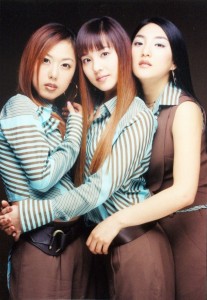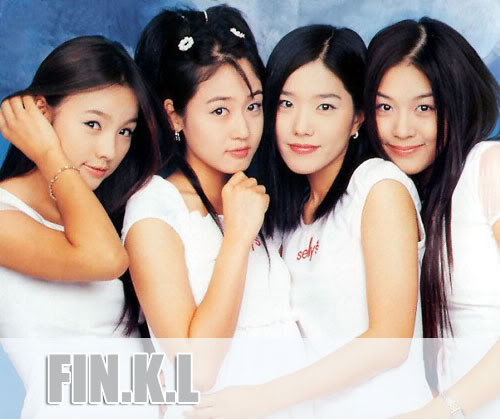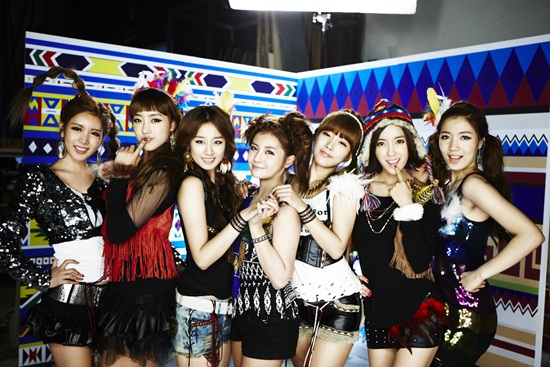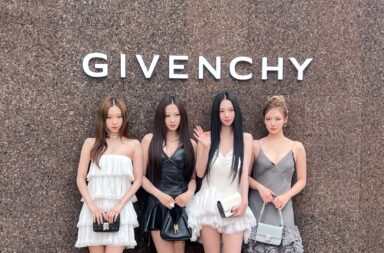 In 2010 alone, 12 K-pop girl groups debuted with catchy tunes, crazy names, unique style concepts and yet another song to add to your MP3 playlist. 2011 is nearly done and we’ve already had 35 girl groups make their debut. Let me repeat, thirty-five!
In 2010 alone, 12 K-pop girl groups debuted with catchy tunes, crazy names, unique style concepts and yet another song to add to your MP3 playlist. 2011 is nearly done and we’ve already had 35 girl groups make their debut. Let me repeat, thirty-five!
That’s an average of three groups a month. In comparison, there have been 22 boy bands/groups in 2011 so far. The long-legged, shiny haired, cutesy concept has been done to death already, so labels are looking for any way to stand out. We’ve seen edgy rocker concepts, pink bubblegum concepts, catty bad girls, sparkly divas – did I miss any? Some of these groups have actually had declining fan group numbers due to unimpressive sales at their debut, while others still just keep pushing their faces into your line of vision as a not-so-gentle reminder to buy their subsequent digital singles.
If you seriously need to blame someone for this craze, don’t point fingers at Girls Generation yet. Point them to their label, SM Entertainment. Remember Eugene, Bada and Shoo? Collectively, they were S.E.S., credited as the group that started the fascination with K-pop girl groups. Perhaps not so coincidentally, they were also formed by SM Entertainment. S.E.S’s arrival in 1997 is the forerunner of the K-pop you hear today. I had all their CD’s and listened to them nonstop with my CD player while taking the bus to work, or having my daily jog. I dressed like them, looked up to them and ignored mainstream pop in the US largely because of S.E.S.
In 1998, Fin.KL hit the scene and with it, a new influential style of music and even more members to fangirl/fanboy over. Lee Hyori was famously in this group, and after Fin.KL went their separate ways in 2002, Hyori released her first single in 2003 and made it chic to go solo. While I love Hyori, I never found Fin.KL’s music to stand out very much. I did notice the beginning of the abbreviations craze, though.
After Fin.KL, Cleo joined the competition in 1999. Baby VOX didn’t really gain popularity until that year as well, though they debuted two years earlier. Cleo stuck to the sweet, fresh style of K-pop while Baby VOX decided to introduce an edgier, sexier style with “Xcstacy” in the early 2000s. Cleo’s “Good Time” ran in my CD player on repeat, and Baby VOX’s “Killer”, “Game Over” and “Get Up” soon replaced S.E.S. Girl groups seemed plentiful, but no one had any idea how much that’d change.
At this point, I was happy with what I had. However, in 2000, labels were scrambling to get a piece of Baby VOX’s pie and as a result, pre-manufactured K-pop girl groups debuted one after the other, waiting to see what would be the next huge thing. It was painfully obvious that these girls were recruited in drones just to see which group could make the biggest impression. It felt almost… embarrassing. I don’t even remember the 13 or so groups that tried to make it between 2000 and 2006. K-pop hit a dry point for me. Where’s the new S.E.S? Who are all these imposters?
Brown Eyed Girls‘ controversial “Abracadabra” MV in 2006 resonated with the media and fans. We can thank BEG for reminding us that girl groups can still be a hit – you just have to find the right formula. Black Pearl in 2007 hit a reasonable amount of success as well. With BEG and Black Pearl proving that K-pop girl groups were beginning to gain traction again, labels decided that it was time to pull out all the stops and debut their very best.
They didn’t disappoint.
NOW you can blame Girls Generation for all the madness. They, KARA, and the Wonder Girls all debuted in 2007, though it was Girls Generation that made the hugest impression overall. At the time, the thought of having to remember nine girls and their personalities were daunting, but I did it and even have a few faves. The concept of that many members isn’t new (i-13 tried it) but Girls Generation did it right. They hit that magic formula of having cute, sexy, relatable members combined with catchy music and unforgettable hooks. While their first single “Into the New World” did marginally well, it was their 2009 single “Gee” that put them on the map.
From there, the number of groups that were formed and revealed continue to be staggering. How do they manage to find so many girls? Do these labels hold recruiting booths at the mall all year round? Thankfully, the majority of girl groups that debut within the past 5 years were largely a success. 2NE1, After School (and their subgroups), 4minute, T-ara, f(x), SISTAR, Secret, Rainbow, miss A, Piggy Dolls and RaNia have all reached mainstream popularity and some have helped to spread the Hallyu Wave globally.
 As awesome as it is to have new music, idols and concepts to appreciate and emulate, it’s still overwhelming and feels like a joke. I mean, come on now.. thirty-five different debuts in 11 months? There are so many groups and members now that I personally can’t keep up anymore. Their faces blend together, as do their stage names. You have to really be unique to stand out, and outside of the big girl concept by Piggy Dolls, the ultra-sexy and controversial dance from RaNia, the disappointment of “hip-hop” group Coin Jackson, and the multiracial angle with Chocolat, the rest are rather forgettable. As much as I love K-pop and discovering new music, I’ve let the music and image do the talking before I decide to invest my time in getting to know a group’s members, idiosyncrasies and exactly what makes this one stand out from the rest. If my first impression of them is lukewarm, I might keep them in mind but I move on to the next or stick with old favorites and follow them instead.
As awesome as it is to have new music, idols and concepts to appreciate and emulate, it’s still overwhelming and feels like a joke. I mean, come on now.. thirty-five different debuts in 11 months? There are so many groups and members now that I personally can’t keep up anymore. Their faces blend together, as do their stage names. You have to really be unique to stand out, and outside of the big girl concept by Piggy Dolls, the ultra-sexy and controversial dance from RaNia, the disappointment of “hip-hop” group Coin Jackson, and the multiracial angle with Chocolat, the rest are rather forgettable. As much as I love K-pop and discovering new music, I’ve let the music and image do the talking before I decide to invest my time in getting to know a group’s members, idiosyncrasies and exactly what makes this one stand out from the rest. If my first impression of them is lukewarm, I might keep them in mind but I move on to the next or stick with old favorites and follow them instead.
I really, really hope the girl groups take a break next year. Even with YG Entertainment announcing their new 2012 girl group and Cube Entertainment’s upcoming boy band, I sincerely hope we don’t see 30-something groups by next Christmas. Let’s allow the current groups to get out of rookie status instead! Labels should be concentrating on making their current groups better, not recruit new girls and throw them to the wolves, hoping for the next SNSD.

